
The train pulled out of Old Delhi. On the narrow wooden berth, tucked under a blanket and two travel bags, a lean indie dog lay so still that ticket-checkers walked past without noticing. It had been the same trick 55 times. “She hid for 55 train journeys,” Divya Dugar says with a chuckle. “She was never caught. She knew when to lie absolutely still and when to get up, indies are so intelligent and loving,” says the freelance journalist and documentary producer.
The first-class coupe of the Indian Railways allows you to travel with two dogs, which requires you to get a parcel office receipt. “If they find out I have a third dog, then I would need to pay a hefty fine,” adds Divya, whose latest book, Chaos in a Coupe: Travelling across India with Three Dogs (published by Harper Collins), is a love letter to India’s ‘desi’ dogs.
Divya Dugar
| Photo Credit:
Special Arrangement
For a decade, Divya and her three adopted indies — Tigress, Marco Polo and Pari — travelled across India by train, hitchhiked in Uttarakhand, spent months in quaint village houses in Goa and Rajasthan, and even flew to Paris and Normandy. Their outings were never flamboyant. They were meticulously researched and planned to be immersive and exploratory. They also turned out to be lessons to her followers on Instagram (@chaosinacoupe) on how to travel with their dogs, particularly on Indian trains.
Travel tips
– Always book two first-class tickets and select ‘Coupe’ as your seat preference. If you’re traveling with friends or family, you can book four seats with a cabin preference instead.
– Don’t forget to send a handwritten letter to the Chief Commercial Officer Reservation requesting a coupe or cabin.
– Pick a train that originates from your boarding station. This increases your chances of getting a coupe. Avoid peak seasons and weekends, when first-class seats are in high demand.
– If your co-passenger agrees to share the space, the Ticket Examiner cannot force you to deboard. They may fine you, but they cannot deny travel. Remember, the Parcel Office books dogs only if you’ve secured a full coupe or cabin.
– Carry a small medicine kit for emergencies, and bring a blanket or shawl; the AC can get quite cold.
– If your pet gets anxious, double-leash them with a collar and harness for added security.
To date, Divya, her husband Olivier, two kids and three dogs have undertaken 75 train journeys and 40 road trips. “I started travelling with my dogs in 2016. It was never supposed to be a book. It was for myself and them. We had no itinerary and to-do lists to tick off, and we would zone in on a place to stay.”
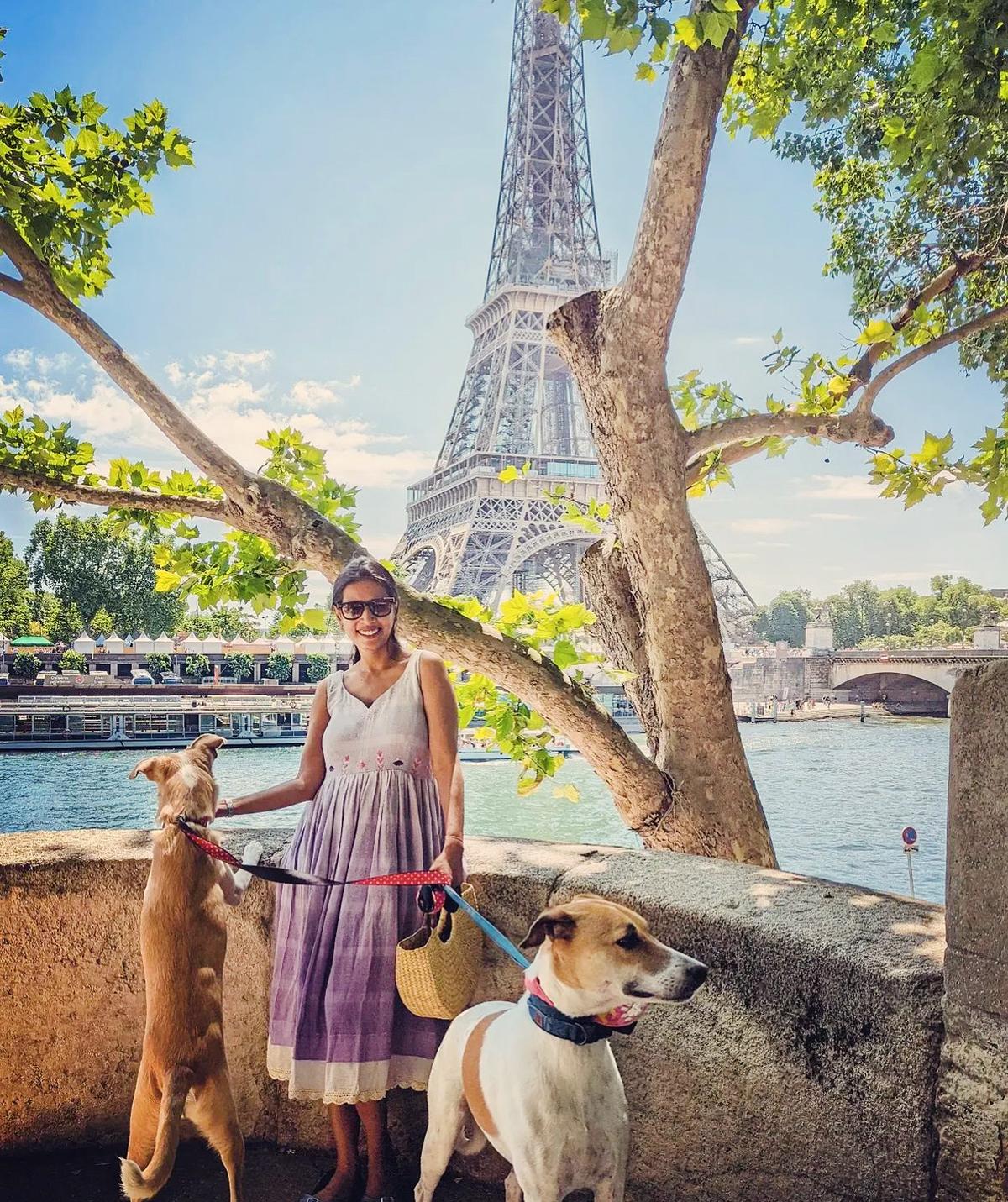
Divya Dugar with her pets
| Photo Credit:
Special Arrangement
That off-the-map approach meant she found old houses, and established deep bonds with the locals. Their dogs and they would become part of the neighbourhood. “We knew the local vegetable sellers, barbers, and neighbours and their pets and the community dogs. The dogs knew which train had the pantry and knew the pantry staff well as they had travelled by the same train several times. They would follow the staff to see if they have a chicken cutlet on the menu. They had a special affinity for trains like Duronto and Rajdhani. They even knew which hotels put out extra baby beds.”
Divya’s storytelling constructs a portrait of animals who are adaptable, intuitive, and intelligent. “Pari was traumatised when I rescued her. She was abused, and had been hurt by construction workers. She is at her best behaviour in luxury hotels and sits calmly during train journeys. With love and compassion she overcame everything but she is still uncomfortable around a group of small boys because she was hurt by them,” shares the author.
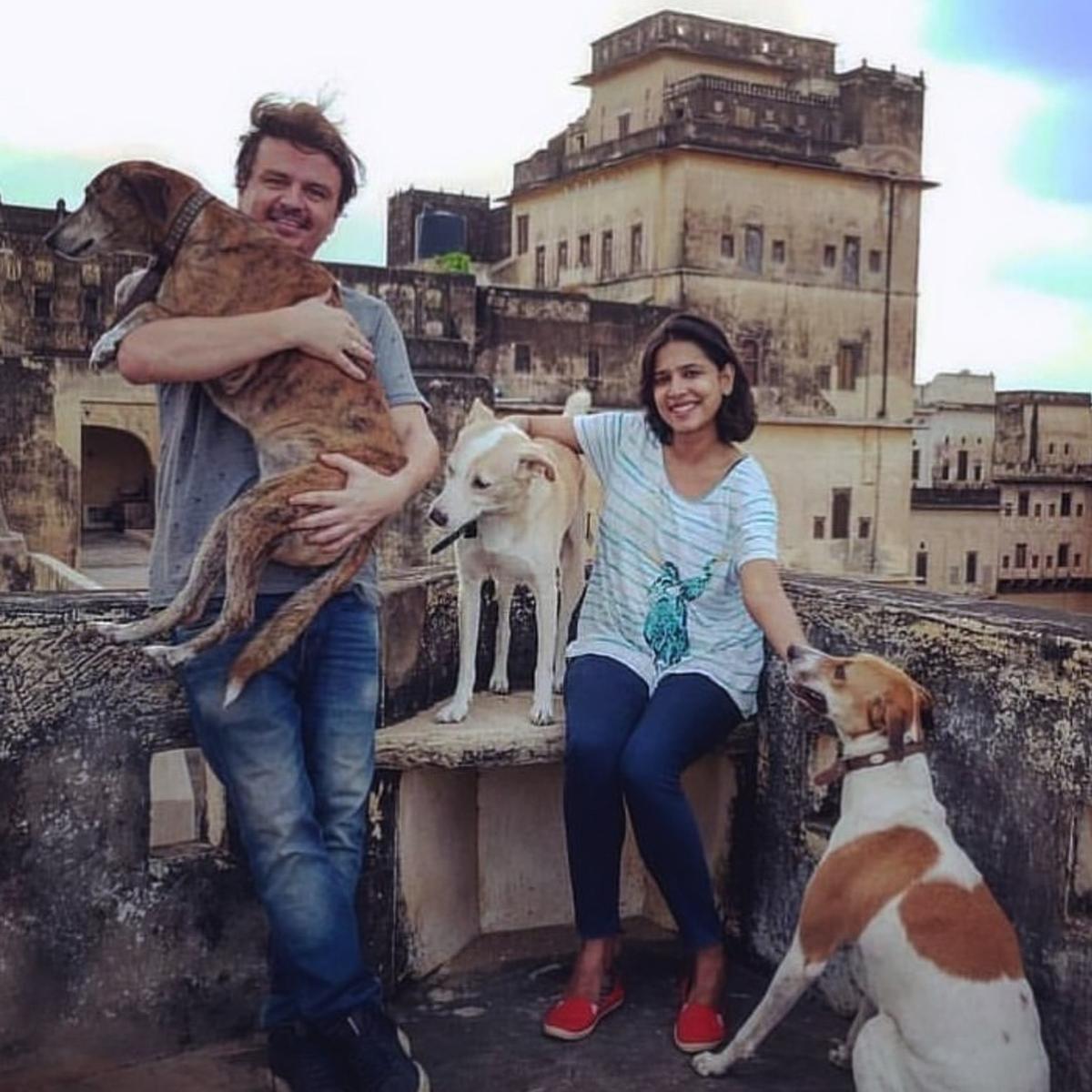
Divya currently lives in Bangkok with her husband, kids, and dogs Pari and Marco Polo
| Photo Credit:
Special Arrangement
Currently living in Bangkok, she says her dogs taught her to slow down. “They showed me how to relish the ordinary things.” Her practical anecdotes are instructive and charming in equal measure. Train travel with dogs, she explains, is not impossible. “The trick is to find a train that originates at your boarding station and to write a letter to the Chief Commercial Officer of Reservations two days before departure.”
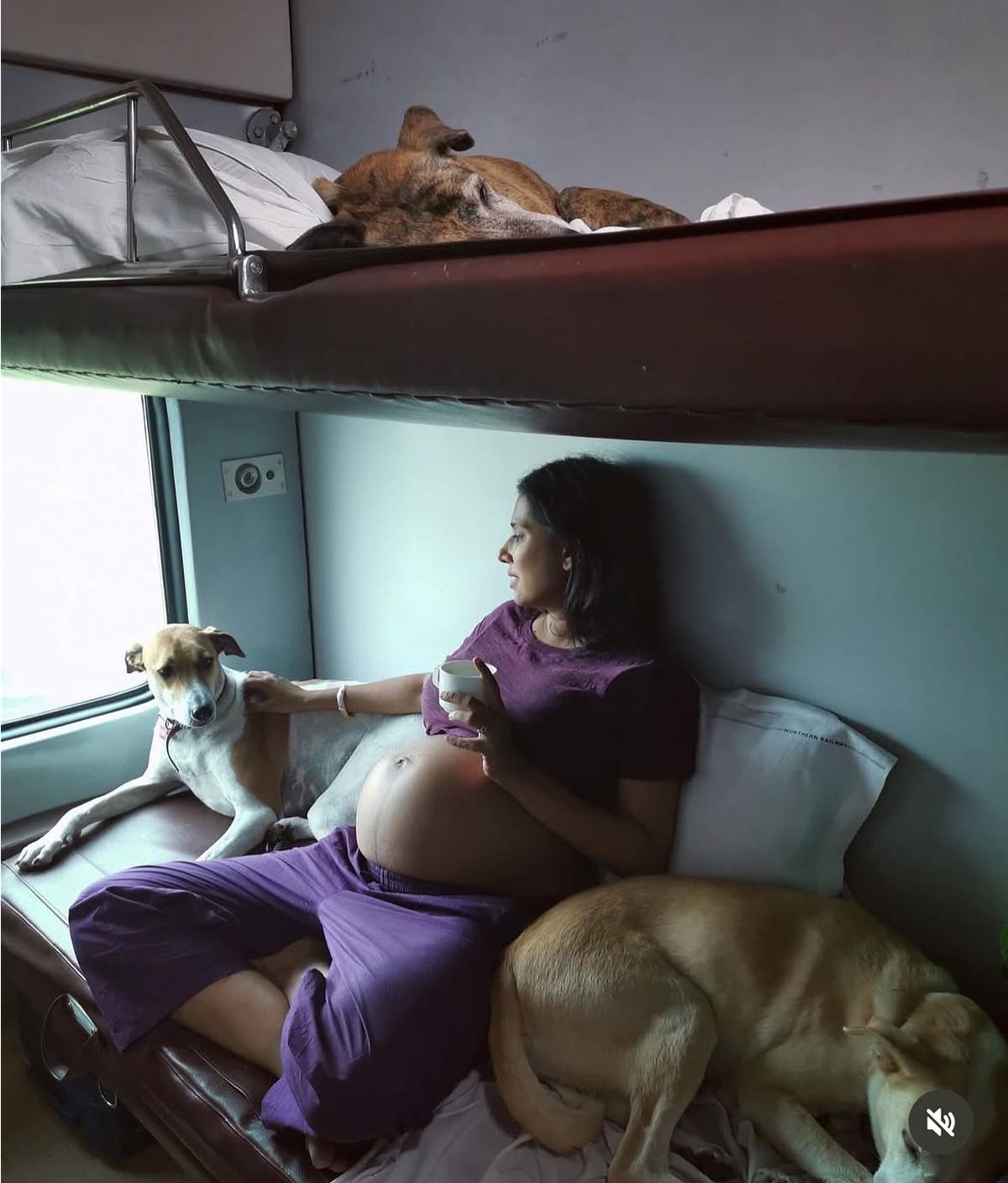
To date, Divya, her husband Olivier, two kids and three dogs have undertaken 75 train journeys and 40 road trips
| Photo Credit:
Special Arrangement
Divya also writes candidly about loss. Tigress, who had been with her for 16 years, passed on two years ago. “There was a lot of heartbreak, a lot of tears. Writing the book forced me to relive those moments. You come face-to-face with your grief every single day when you write a book like this.”
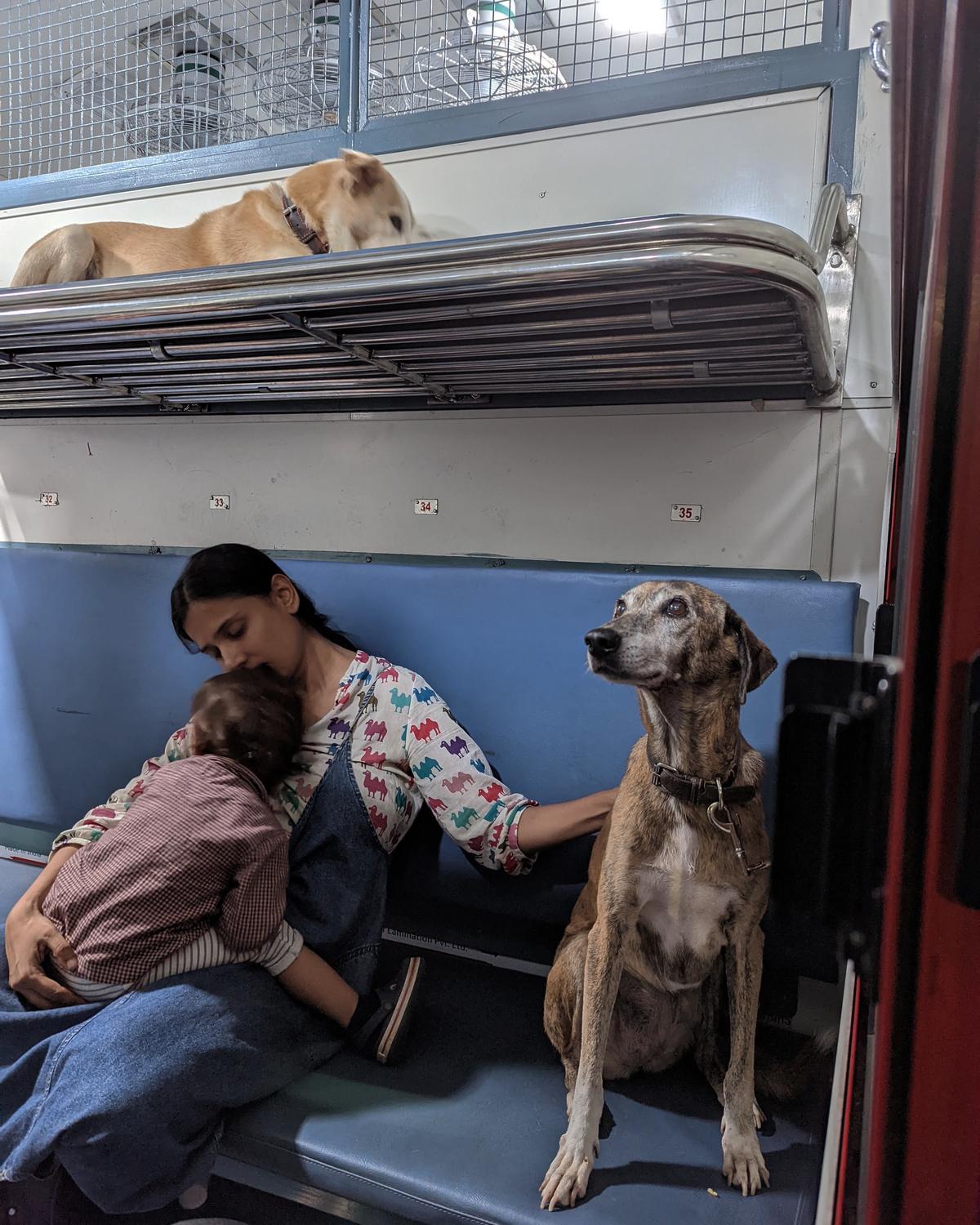
Divya with her child and Indies
| Photo Credit:
Special Arrangement
She adds that the book is not a mere travelogue, but carries an urgent message about how we see and treat indies. In cities across India, street dogs are increasingly being misunderstood, seen as a nuisance, a danger, and an inconvenience. Divya’s experience refutes that narrative. “They are not security guards or stray nuisances,” she says. “They are companions, each with a personality. They deserve patience and dignity.”
Divya wants more people to consider adoption and to understand how hard indies’ lives are on the streets. “Their aggression and behaviour stem from deep-rooted experiences of fear, abuse, intolerance and hunger endured on the streets.”
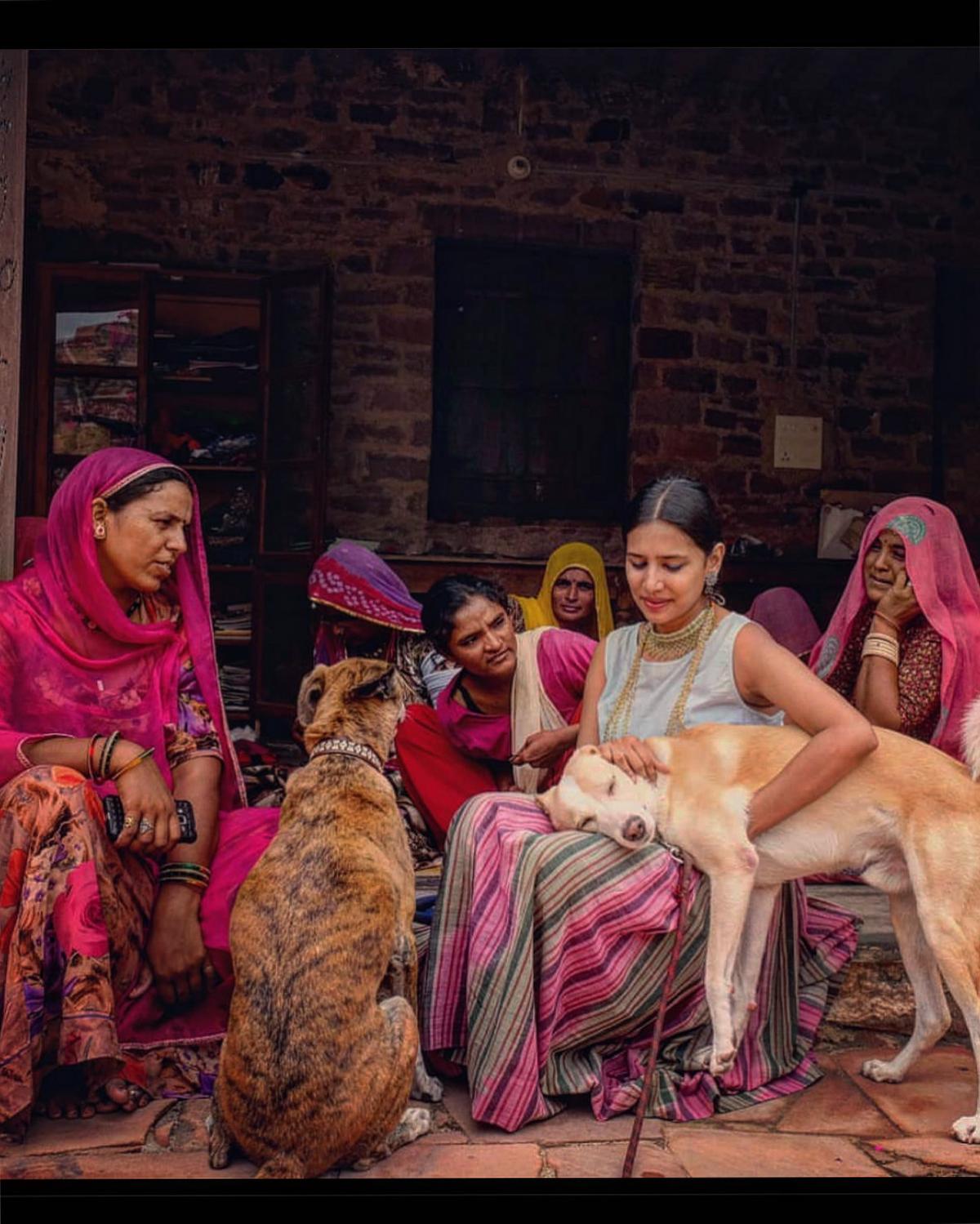
Divya’s storytelling constructs a portrait of animals who are adaptable, intuitive, and intelligent
| Photo Credit:
Special Arrangement
Ultimately, it’s an ordinary story of three extraordinary travellers with the Indian Railways playing the role of a big enabler. “Because it has these three wonderful docs teaching us life lessons, it just becomes extraordinary. I think this story is much bigger than Marco Polo, Tigress, and Paris. They represent all the street dogs of India.”
Priced at ₹499, the book is available online
Published – November 14, 2025 04:25 pm IST





